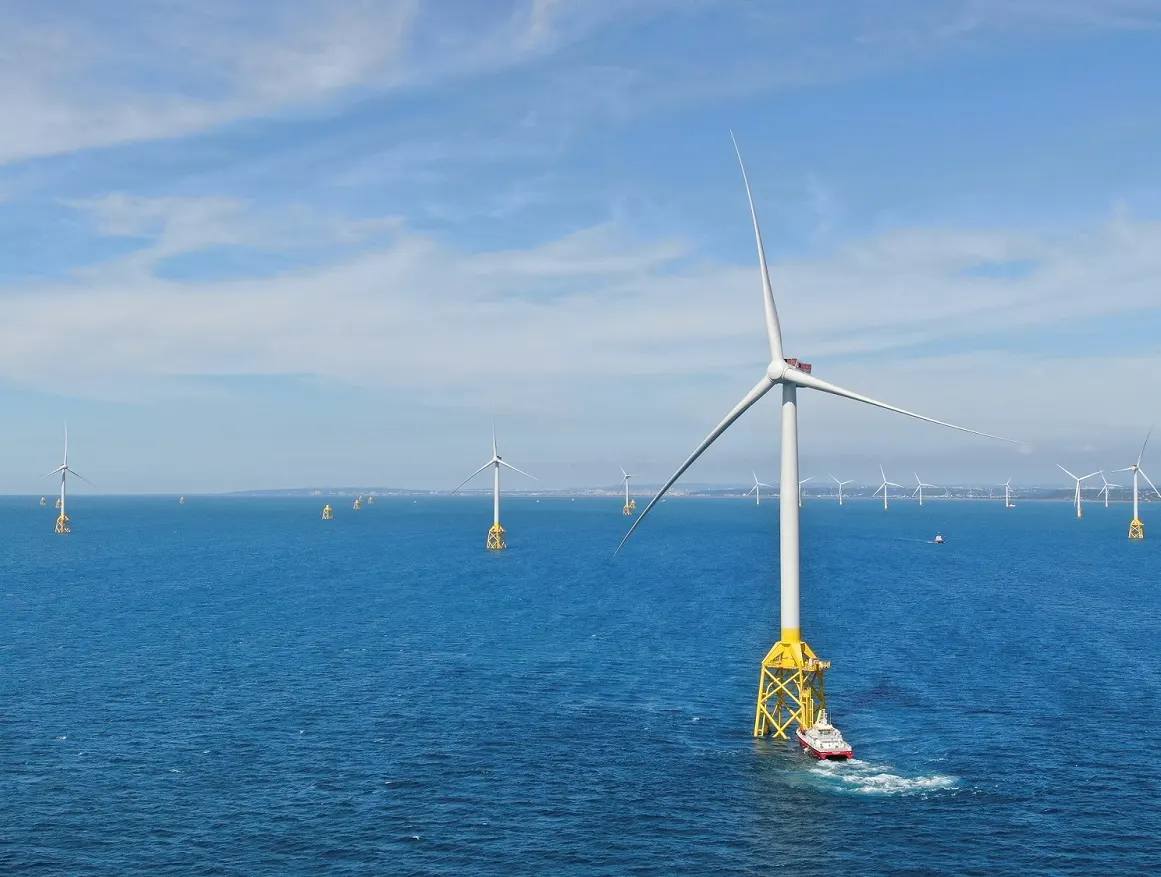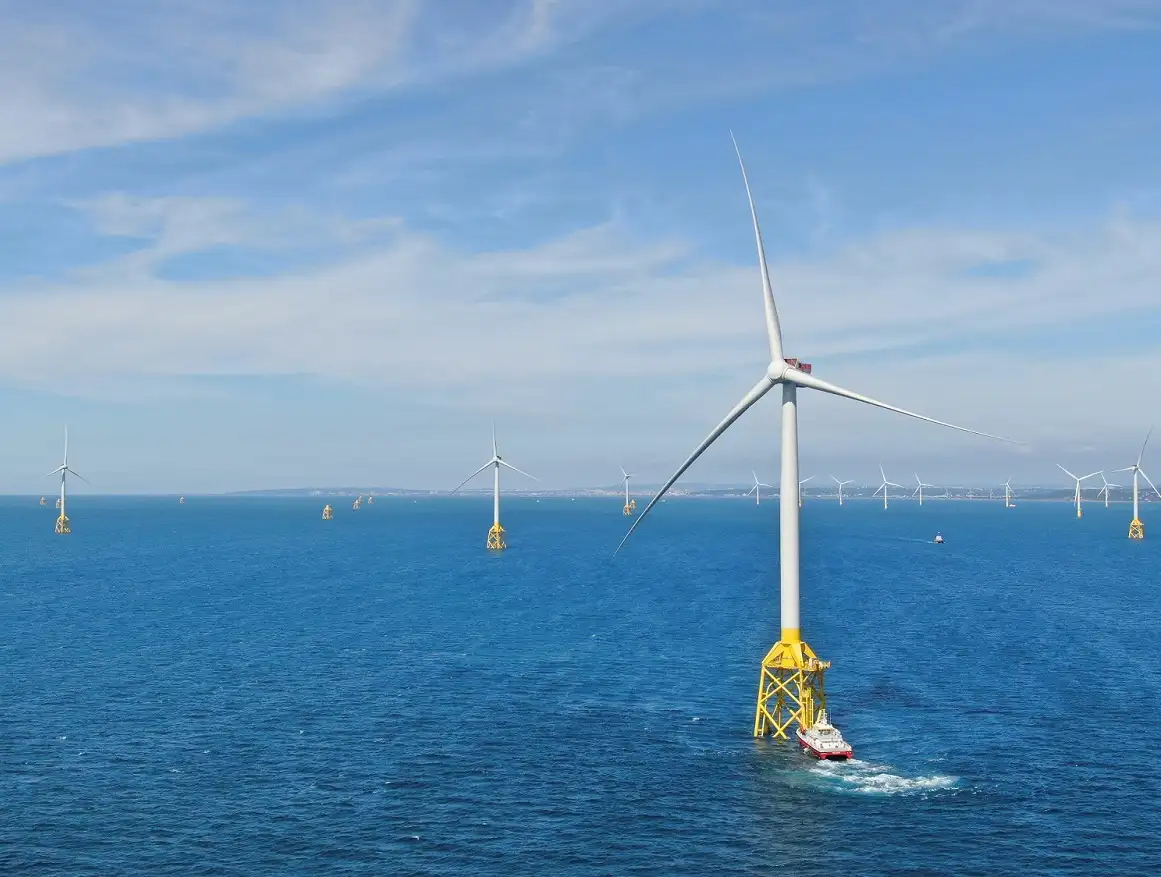Independent O&M Meets International MCE: Taiwan's New Offshore Wind Approach

Independent O&M Meets International MCE: Taiwan's New Offshore Wind Approach

Members of the Formosa 2 Wind Power team gathered for a group photo outside Parkwind’s operations base in Oostende.
Taiwan's Offshore Wind Industry Enters a New Operational Milestone
As Taiwan's offshore wind industry officially enters the critical phase of operations and maintenance, how to rapidly accumulate practical experience and establish localized technical capabilities has become a core issue determining the future development trajectory of the industry. Formosa 2 Wind Power is among the few offshore wind farms in Taiwan operated independently by project companies with direct O&M management, requiring the establishment of independent O&M strategies and capabilities while maintaining synchronization with international advanced technologies.
Despite a small number of voices questioning whether project company self-operated facilities might lack O&M support, Formosa 2 Wind Power has leveraged its shareholders' global resource network to pioneer an innovative model of "project-led O&M combined with shareholders' existing abundant O&M resources." In November 2024, based on the relationship between shareholders JERA Nex and Parkwind*, Formosa 2 Wind Power dispatched a professional team to Belgium to participate deeply in the Main Component Exchange (MCE) project at the Northwester 2 wind farm, fully demonstrating how this operating model effectively combines autonomous management with international technical resources.
*Note: During the November 2024 exchange, Formosa 2 and Parkwind were both under JERA Nex. JERA Nex bp was officially established on August 4, 2025, holding 49% of Formosa 2 shares and 100% of Parkwind shares.
International Technical Exchange Under a Unique Operating Model
This 12-day European technical exchange was not only an in-depth professional dialogue but also a comprehensive industry cultural experience. Formosa 2 Wind Power's Operations Manager Jensen Yan and WTG Lead Beck Liao, with full support from Belgium's Parkwind company, participated in every aspect of the MCE project from Oostende's operational headquarters to the actual North Sea wind farm.
Europe, as the earliest and most institutionally mature region for offshore wind development, has accumulated over thirty years of O&M practical and engineering experience. Based on the relationship between shareholders JERA Nex and Parkwind, Formosa 2 Wind Power was able to leverage this technical resource connection to participate in actual operations at advanced European wind farms, developing deep technical exchanges and experience sharing. This strategy of utilizing shareholders' global resource networks represents an important advantage of the project company self-operated model.
In the European practical exchange, the Formosa 2 Wind Power team deeply experienced the precise operation of mature project management systems. European operators have established a comprehensive project requirements matrix that can systematically confirm required documents, technical specifications, and operational conditions with contractors. This framework not only helps efficiently complete risk assessment and resource allocation but also enables identification of potential challenges before operations begin, reducing uncertainty and delay risks during execution while further improving overall operational quality and efficiency. The in-depth technical dialogue between both sides also provided important references for Formosa 2 Wind Power's operational strategy.

The team took part in inspections led by a Marine Warranty Surveyor, reviewing onboard equipment and replacement components.
Technical Deep Dive: Complexity and Precision of MCE Operations
From a wind farm management perspective, MCE belongs to non-routine major maintenance operations involving high technical thresholds and relatively scarce human resources with relevant experience. Therefore, implementing Marine Warranty Survey (MWS) is a key strategy for wind farm teams to reduce construction risks. MWS is a third-party professional entity that can not only provide technical advice on operational planning and execution processes but also offer valuable practical experience based on past cases, strengthening overall engineering safety and feasibility.
The MCE operations participated in required "reverse installation" procedures first, with quite complex preliminary preparations including removing high-voltage cables connecting towers and nacelles, dismantling blades, and other steps before successfully removing the damaged nacelle. Such processes are still rare in Taiwan, representing a valuable learning opportunity for the Formosa 2 Wind Power team.
This exchange focused on MCE-related project execution management and operational processes, including preparation and scheduling of Jack-up Vessels (JUV) and technical details of construction processes. The team also participated in European on-site division of labor and collaboration mechanisms' practical operations, further understanding their operational processes in subcontractor management and asset O&M. Additionally, both sides exchanged views on differences between European and Taiwanese wind farm operation-related regulations and systems, laying a good foundation for future localization.
Although JUV operational processes are similar to wind farm construction phases, Northwester 2 wind farm has completed construction and is operating normally. During operations, special attention must be paid to avoiding existing cable corridors and footprints left by support legs during installation, resulting in more restricted JUV operating space and therefore higher requirements for construction planning and precision control.
Emergency
Careful planning is certainly important, but plans often cannot keep up with changes. Offshore wind personnel, as people whose work is highly subject to weather uncertainties, must always adapt to changes. The Formosa 2 Wind Power team originally planned to travel from Belgium's Oostende via Crew Transfer Vessel (CTV) to the wind farm but had to quickly adjust their itinerary due to temporary changes in JUV departure times, instead taking a taxi from Belgium across the border to Rotterdam Port in the Netherlands to board the vessel.
Sudden changes forced the Formosa 2 Wind Power team to complete cross-border transportation, customs clearance, and boarding procedures in a short time under unfamiliar language and environmental conditions. Each step in the process tested emergency response and problem-solving abilities, also providing insights that in offshore wind O&M, beyond having professional and institutional understanding, what's most needed is calm judgment when facing unexpected challenges and courage for self-breakthrough. This emergency situation of traveling to foreign ports differs from the cross-border emergency scheduling rarely encountered in Taiwan wind farm daily operations, accumulating practical experience for the Formosa 2 Wind Power team in high-mobility response under complex emergency situations.
System Comparison and Cultural Reflection: Differences and Lessons from East-West Operating Models
This exchange allowed the Formosa 2 Wind Power team to deeply appreciate the mature division of labor and communication culture demonstrated by European wind farms in on-site management. The Belgian O&M team allocates personnel to optimal positions based on skills, with each component working closely together like gears operating smoothly. Team members courageously express opinions proactively, promptly clarifying safety concerns or operational details to ensure consistency in team operations. Additionally, flat organizational structures promote multi-perspective discussions, leading to more comprehensive decision-making. If Taiwan can establish such positive and open communication culture, it will help strengthen safety management and execution quality in wind farm O&M.
At the institutional level, European governments provide relatively streamlined data and regulatory requirements for wind farms, focusing on substantial risk management and operational safety. Taiwan is currently still in early institutional development stages, facing more complex reporting and regulatory requirements. As the industry gradually matures, we hope the government can develop toward cross-ministerial information integration and process simplification. Additionally, European wind farms have historically restricted or prohibited fishing activities, but in recent years have gradually shifted toward promoting coexistence strategies between wind power and fisheries, providing important reference value for Taiwan, which similarly emphasizes diverse marine utilization.

At sunrise, the Belgian North Sea wind farms offered a breathtaking and majestic view.
Sustained Deepening of Bilateral Exchange: Building Long-term Cooperation Mechanisms
What Formosa 2 Wind Power and Parkwind have established is not merely one-time technical exchange but institutionalized long-term cooperation based on common shareholder relationships. During operations, both sides continuously conduct technical visits and exchanges, developing institutionalized knowledge exchange and resource sharing, forming a virtuous cycle of mutual support and common growth.
Particularly noteworthy is that in July 2025, the Parkwind team made a special visit to Taiwan to meet with Formosa 2 Wind Power. This return visit fully demonstrated the depth and continuity of bilateral technical exchange. The Parkwind team gained firsthand understanding of Formosa 2's operational methods, conducting in-depth experience sharing and discussions on wind farm management strategies, organizational structure design, personnel training systems, and other aspects. This institutionalized continuous exchange is the best proof of continuous accumulation and refinement of O&M technology, also demonstrating Formosa 2 Wind Power's ability to maintain synchronization with international advanced practices under its independent project operating model.
This "project-led O&M combined with shareholders' existing O&M resources" model effectively responds to market questions about project companies' self-operated capabilities. Through shareholders' rich experience in the global offshore wind field, Formosa 2 Wind Power can maintain operational autonomy while obtaining world-class technical support and best practice guidance.
The valuable experience accumulated by the Formosa 2 Wind Power team from this journey has been incorporated into subsequent operational and maintenance planning. They are working to establish more comprehensive major component replacement response mechanisms and standard procedures, hoping to promote knowledge exchange and experience transfer within the industry through practical sharing, driving common growth of the entire ecosystem. These interactions have brought substantial benefits to Taiwan teams, further strengthening maturity in institutional construction and operational execution, laying a solid foundation for successful practice of the project company independent operating model in Taiwan.

Parkwind’s senior operations and maintenance management team visited the Formosa 2 Wind Power office in Taichung.
Forward-looking Vision: Turning Independent O&M Experience into Assets for Taiwan's Offshore Wind Industry
As Taiwan's offshore wind farms gradually enter operational phases, how to effectively introduce mature European technologies and operational models while adjusting and localizing according to local conditions will become an important issue. Although Taiwan cannot completely replicate European models, using European experience as a foundation for gradual adjustment is not only more efficient and feasible but can also accelerate the development of local professional capabilities. Simultaneously, by strengthening the connection between international and local talent and technical exchanges, Taiwan's wind power operating system can be expected to continue maturing.
In the short term, challenges remain. Europe's large number of wind turbines and stable MCE demand enable long-term planning for vessel schedules and professional teams; in contrast, Taiwan's current MCE demand remains sporadic, leading to higher difficulty in vessel scheduling and resource coordination. How to effectively integrate and ensure related resources will be an important issue that the industry must collectively address.
Against this background, Formosa 2 Wind Power’s “project-led O&M combined with international resources” model illustrates a pathway that balances operational autonomy with global best practices. It not only verifies the feasibility of self-operated project company models but also offers a practical case for industry observation and reference. Looking ahead, Formosa 2 will continue to internalize field experience into operational knowledge and work closely with government, third-party institutions, and industry partners to foster positive cycles, contributing to the maturity and resilience of Taiwan’s offshore wind O&M./p>

Formosa 2 Wind Power
Formosa 2 Wind Power is located off the coast of Miaoli, jointly owned by Stonepeak (51%) and JERA Nex bp (49%). The wind farm has a total installed capacity of 376MW, completed installation of 47 wind turbines in January 2023, achieved full turbine grid connection in March of the same year, and officially obtained commercial operation permits on September 8, entering the O&M phase. It is expected to supply electricity for approximately 380,000 households annually.
Formosa 2 Wind Power is one of the few offshore wind farms in Taiwan operated independently by the project with in-house O&M management. In the O&M phase, it works closely with local partners such as CTCI Corporation and Sinotech Engineering, enhancing localized execution and contributing to the maturity of Taiwan’s offshore wind industry.
More related articles
